Jim Poe last saw John Hughes’ The Breakfast Club as a teenager in Florida. In the 27 years since that viewing, he studied film at USC, moved to Australia, worked as a DJ, film programmer and writer, gotten married and, earlier this year, had his first child. The film’s 30th anniversary in 2015 prompted him to rewatch the film with a completely new set of eyes, seeing the film both through the prism of childhood nostalgia but also now, as a parent.
Needless to say, The Breakfast Club changed my life. I was 14 when it was released; for someone my age to say The Breakfast Club was big is like saying Michael Jackson was big, or Princess Leia’s metal bikini was sort of significant – it doesn’t need reiterating. I first saw it when it premiered on HBO in February of 1986, one year after its theatrical run. I was already a huge fan of Sixteen Candles and, to a lesser degree, Weird Science. My ability to talk about films was only just forming (my biggest influence: a Roger Ebert book my parents got me for Christmas). Still I clearly saw the difference between John Hughes’s warm, evocative, intelligent storytelling about people my age and the gross-out teen comedies of the day, which I was never into.
My sister and I must have watched The Breakfast Club half a dozen times on HBO that month alone. Then my dad taped it and we watched it another dozen times (at least) in the next couple of years. The spell would be cast and the tears would flow every time. I memorised the screenplay. I studied every frame. I was as obsessed with it as I would later get with bands.1
The most memorable times watching it were late at night, by myself, with the headphones plugged into the TV. We’d only had the VCR for a couple of months. The TV was a recent acquisition too, much bigger and more modern than the previous one we’d had since the ’70s. Its headphone jack was an unassuming feature, but for me a crucial one. Sitting completely immersed in a film, quite close (probably too close) to the screen, with the outside world blocked out, was a formative new cinematic experience for me. The Breakfast Club‘s constrained setting, cool design and rich dialogue were excellent for this kind of viewing. It was one of the first films I scrutinised so closely.
In his great essay for Reverse Shot about Ferris Bueller’s Day Off, Eric Hynes touches on the importance of Hughes for the VHS generation. Likewise, in his obituary for Hughes, The AV Club’s Noel Murray reminds us his films were “staples of VCRs in wood-paneled dens across America.” (No wood panelling in the prefab Army housing we lived in, but still.) The privacy and accessibility of this mode of interaction made all the difference to young minds, and Hughes’ films suited it perfectly. Watching them alone, or with our best friends or sisters, was how we absorbed their aesthetic, how they shaped us.
As works of cinema, Hughes’s films seem to exist in their own realm, impervious to criticism or analysis, like Bollywood or wujia.2 That’s not to say there were no influences. Hughes’s work is most often compared to the 1930s and ’40s screwball comedies of Ernst Lubitsch, Preston Sturges, Frank Tashlin and Frank Capra. His trick was to combine those films’ zippy dialogue, slapstick and sentimentality with a Baby Boomer’s melancholy self-awareness and rebellion; enhanced by his singular ability to tap into, even dictate, ’80s teen fashion, music and slang. In turn, the fascination and devotion inspired by Hughes’s films influenced a generation of filmmakers and film lovers. A.O. Scott unabashedly called him “our Godard.”
Here’s the thing: I haven’t watched The Breakfast Club since that time. By my senior year of high school, I felt I’d outgrown its archetypes and melodrama. The tears had stopped flowing. During all the years since I felt no desire to watch it again. That has little to do with growing up (for one thing I’ve hardly done that). And I have a huge appetite for thoughtful high-school comedies. Dazed and Confused, Clueless, Rushmore, Juno, Napoleon Dynamite and Superbad3 – all influenced by Hughes to some degree – are amongst my greatest moviegoing pleasures, guilty or otherwise, in the intervening years. I’ve watched Sixteen Candles and Ferris Bueller’s Day Off, too, a few times since, and kept loving them (give or take a racist caricature or two). But I’ve avoided The Breakfast Club. There’s something about how it milked me for every single feeling during that epochal first couple of years. I thought it had nothing left for me. My fading memories were of something overindulgent, a pint of cinematic Ben & Jerry’s, lacking the masterful lightness of Sixteen Candles and Ferris and the above-mentioned progeny. I was happy to keep my memories and let it be. Maybe deep down I was also afraid of what it would do me to lift the lid.
Until now that is. I’m not into round-number anniversaries and all the lazy nostalgia they inspire. But this one, The Breakfast Club‘s 30th, seemed different. Something I can’t explain made me curious to see it again. Maybe it was becoming a father recently and all the loosey-goosey emotion that uncorked. Maybe it was catching Sixteen Candles on TV the other night, helplessly drawn into Hughes’s fantasy world yet again.
And so late at night, headphones plugged in, I plunged back in for the first time in almost 27 years.
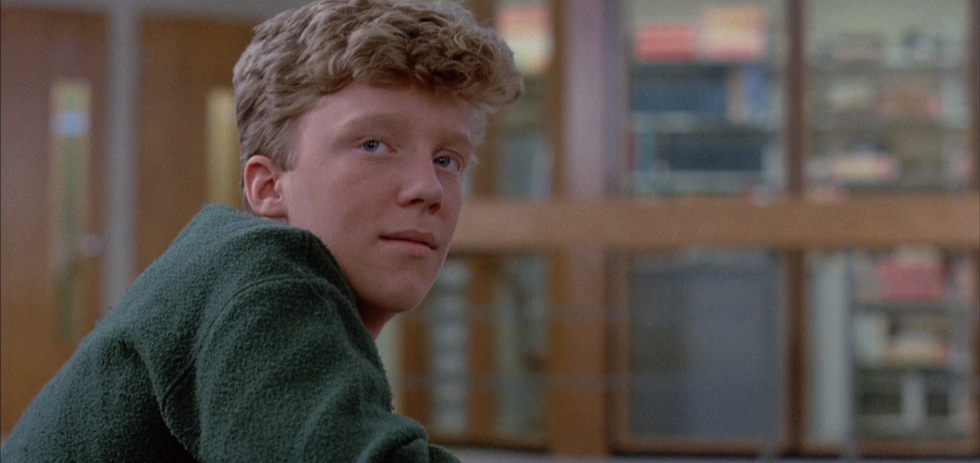
I found a film that’s, yes, heavyhanded at times – known for lines like, “When you grow old, your heart dies” – but much more nuanced and cinematically inventive than I remembered, still remarkably fresh and exhilarating. And after a strange sleepless night spent lying in bed thinking about it, then watching it twice more that week (ostensibly to take more notes), I realised The Breakfast Club‘s power to provoke obsession in me hasn’t lessened much with the onset of middle age.
The impact on me, after so long between drinks, was immediate, the first bar of the extended drum intro of “Don’t You (Forget About Me)” triggering a torrent of memory and feeling. I’m not alone in that; that song is the first thing anyone thinks of when they think of the film, and vice versa, a perfect distillation of its mood and atmosphere. What other theme song from a film could compare in its context for an entire generation? “Mrs. Robinson” perhaps?4 Would this tune mean as much if I’d been older? Maybe not; maybe Simple Minds were the Coldplay of their day. But timing is everything, and I’ll never not love it. That echoey slide guitar and those synth stabs encompass worlds for me.5
Then the titles: the font6 so elegant and modern, stark gold-on-black. Your first clue this isn’t a standard teen comedy.
Then the Bowie quote: “And these children that you spit upon as they try to change their worlds…” The exploding glass: so melodramatic, so punk.
Then Hughes’ visual storytelling in full gear, with the first shot of the brutalist façade of the high school, grey, forbidding, like an evil fortress, like any school from the era; and the montage of interior shots. The narration, read by Anthony Michael Hall. “We were brainwashed.” Hughes the rebel.
Something about the bare trees and overcast sky of the opening exterior shots really spoke to me as a kid. Mind you I was living in Florida at the time; the dark and cold Midwest was for me a distant fantasy of middle America. But a potent one, which Hughes made universal. Watching the five characters file into the library and establish their dynamic with no dialogue at all,7 Hughes’ accomplishment with the setting struck me fully for the first time. Is there one room in any film that’s as well-known, as imprinted on our memories, as that library?
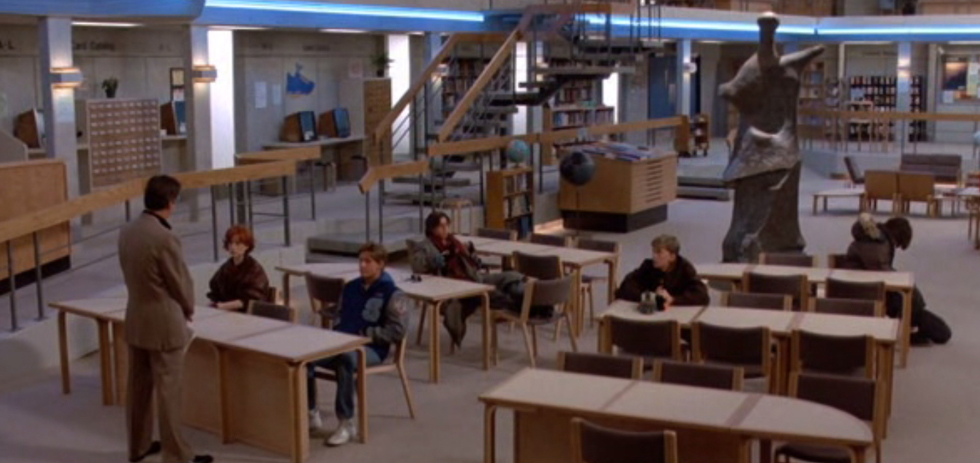
Its design is so superb. “A comfy suburban prison, almost womblike in its concrete spaciousness,” writes Owen Gleiberman. I was amazed to find out the set was built from scratch. Hughes had it constructed in the gym of a real high school.8 The split levels, the giant sculpture rising from the centre, the ring of fluorescent and neon lights: the extravagant use of space and dioramic beauty are Wes Andersonesque.9
The gorgeous cinematography (by Thomas Del Ruth) adds to it: the fluorescent-lit earthtones of the library offsetting the primary colours of the costumes.10 The blue neon encircling the room is such a wonderful touch – so sleek and cyber, so 1984, along with the ultramodern clock face and that sculpture, which variously resembles a tree, a headless troll and a crucifix. All more significant when you realise there’s no sunlight in the film at all, bar the overcast first and last scenes.
By contrast, the rest of the school is a visually confusing maze, uglier and more threatening: concrete blocks, institutional tile floors and fluorescent light (the buzzing of the lights prominent on the soundtrack). So many interior spaces were just like this in schools I attended; I can almost smell it. We never know where we are in this environment, whereas the library is so definite in our minds. The terrific sound design is integral to this effect as well. Scraping chairs, shuffling coats and scarves, Brian’s clicking mechanical pencil, Vernon’s squeaky shoes and Allison biting her fingernails carry the first scene in the library as much as the dialogue.
The film is known for its talkiness, but it’s impressive how much of it takes place in silence, with the drama happening in eye contact and subtle gestures. Key to this is the sharp editing by the veteran Dede Allen (who also cut Bonnie and Clyde and Dog Day Afternoon), as when Vernon selects a reluctant Andy and Allison for the milk run, six eyelines intersecting in a staccato rhythm. This film was a major influence on the way I look at editing: Allison disassembling her sandwich, the lunchmeat flying; the crazy drama of the confrontation between Bender and Vernon, alternating close-ups tighter each time.
The dynamic blocking and camerawork, too, makes the confined space continually interesting. The way Allison, sneaking into the frame, steals Bender’s knife after he drives it into a chair. Or the cartoonish way Bender bounces off the floor and into the frame after Andrew wrestles him to the ground. It’s almost Coen-esque (they share the same screwball influences, of course).
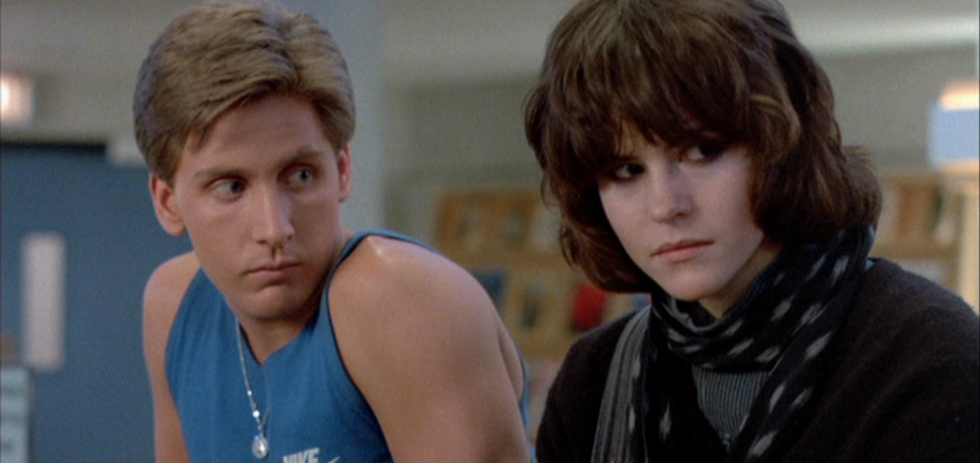
It was good to get lost in Hughes’s screenplay again. It wasn’t just adolescent obsession that kept me watching it on repeat as a kid: for a film set in one building, with six principal characters, it’s quite a layered and detailed screenplay that keeps revealing little treasures.
It’s in the patience of scenes like Vernon and Andrew struggling awkwardly to keep the library door open – no particular punchline, just a wonderful slow burn of mannered physical comedy. Bender’s escape through the crawlspace, strangely resonant for its use of everyday infrastructure – as a kid you always wondered what was above those acoustic tiles.11 The montage of boredom, Hughes and his leads unafraid to show the weird or gross things kids do when no one’s looking. The whistling from The Bridge on the River Kwai, a comic riff on the tense institutionalised atmosphere. The magical realism of the glass door shattering after Andrew’s cathartic yell.
So many clever details to keep track of – again, foreshadowing Wes Anderson’s collectible worlds: the visual references to the characters’ backstories during the opening montage; Vernon and Carl drinking Old Style (a classic Chicago brew); the Not Saved pin on Bender’s glove; Brian’s inside-out sweatshirt; Allison reading the sleeve of Prince’s 1999; and, later, the way she interpolates the dance from A Charlie Brown Christmas. The gentle slapstick that peppers the film – such as the absurd chase sequence that echoes Chaplin and Keaton – works because it serves the story. Hughes incorporated influences from Hollywood classics in such an easy, natural way in his teen cycle, in contrast with some of the tediously regressive comedies of his later career.
There’s also a lot of the freewheeling ’70s New Hollywood in this most ’80s of films – obviously in Hughes’ teenage take on the talkiness of Altman and Woody Allen, but also in the film’s genuinely rebellious streak. There’s no way the herb-smoking scene makes the cut even a couple of years later. All-American basketball player Len Bias died of a cocaine overdose in June 1986, and Reagan’s drug war started after that, with a dramatic shift in attitudes towards drugs on film. In some ways The Breakfast Club represents the end of an era. Even now, how many teen protagonists would you see smoking out on film without being punished or suffering in some way? Here it’s transformative.
Hughes’s way with dialogue is one reason for his teen cycle’s enduring popularity. It’s famously zingy of course, with lines that took on a life of their own. (“Could you describe the ruckus, sir?” “For better hallway vision.”) But it’s also layered with understanding about how kids really think and talk – such as Andrew and Allison discussing vodka like it’s a big deal.
Hughes’s embellished teen slang is almost like the made-up jargon or futurespeak of a good sci-fi writer (say, Joss Whedon). The difference is kids actually picked it up and used it. I don’t think we knew Hughes was inventing words and phrases like “wastoid” and “hot beef injection”; he did it so organically.12 Bender’s “Eat my shorts!” is a classic case – I had forgotten Hughes came up with that originally. On the other hand some of the film’s more famous lines are its most contrived. Allison’s “When you grow up, your heart dies,” is just bullshit. I hated it even as a kid. Bender’s response is spot on: “Who cares.”
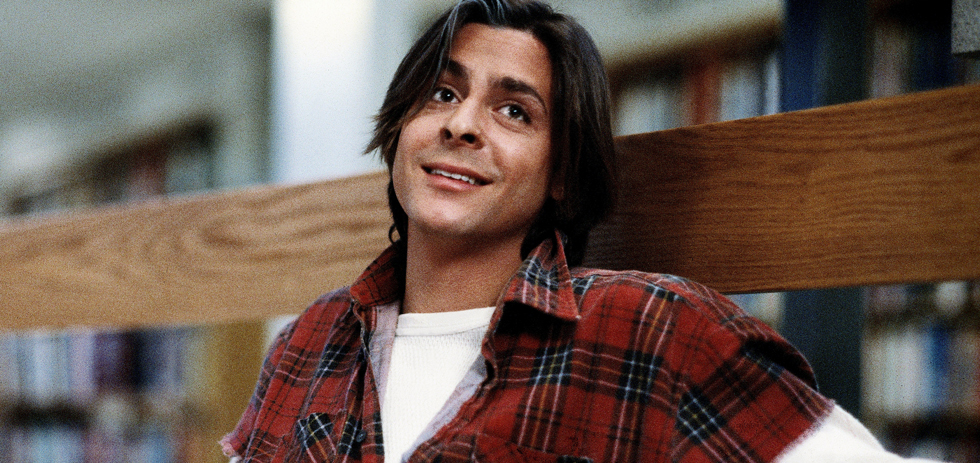
One of the most-quoted reviews of the film is Pauline Kael’s; she wrote that it’s “a movie about a bunch of stereotypes who complain that other people see them as stereotypes.”13 As sour as this take is, there’s something to it; as I said it’s one of the reasons I drifted away from the film as I got older. In retrospect I think the character development has been underrated by this focus on the types. I only recently found out the film was shot in order, page by page (after three weeks of rehearsal). That’s just not done very often. It has to be one reason for the great chemistry amongst the ensemble.14
In some ways Judd Nelson’s performance is the film’s biggest problem. He really overdoes it a lot, especially early on, and I found it a bit of a cringe during my first viewing this time around. Significantly, he was 25 at the time of filming; he seemed like an adult to me when I was 15.15 His outsized hooliganism and pastiches of DeNiro and Pacino clash with the more understated approaches of the others, especially Hall and Molly Ringwald, both 16 at the time (Ally Sheedy and Emilio Estevez were in their early twenties.) John Cusack was slotted for the role of Bender at one point; you wonder if he might have fit in better, and actually looked like a high schooler.
But the film wouldn’t be what it is without Nelson either. I have a lot of affection for his performance. So many of the great bits belong to him, from “Screws fall out, the world’s an imperfect place,” to “Maybe your old man and my old man should get together and go bowling.” The tonal incongruities are just part of the texture of the film now. It works when he’s instigating and pushing the others around, and it works again when he lets his defenses down.16

Watching now, I’m struck again by how much Ringwald meant to me, and still does. Her detractors have always put me on the defensive. The most memorable was my Cinema 101 professor at USC, Drew Casper, who called her “Molly Ringworm,” saying she had nothing on classic stars like Audrey Hepburn.17 I thought that was unbelievably bitter and cruel.
It’s not a news flash that his generation in the industry and media didn’t think much of Hughes’s films and the Brat Pack (I always hated that term). As Hughes’s muse, Ringwald became an icon of our generation and bore the brunt of the hate. Labelled a “brat” or a spoiled princess, placed into a convenient tabloid box based on her image, her hard work and craftsmanship all but ignored. It wasn’t fair and, now that I think about it, was probably sexist too. The fact is that Ringwald, at her peak, really did have some of the magic of Hepburn. Her pensive stare could have launched a thousand, uh, BMWs. Roger Ebert compared her to Elizabeth Taylor in all seriousness. Her languid pout sometimes makes me think of Scarlett Johansson, too. Like each of them, there was an intelligence and strength of character behind the pout, more obvious to me now with age. Her massive appeal lay in the moral firmness of her characters that combined old-fashioned virtue and girl power. The best cultural touchstones I can think of are Jane Austen’s heroines.18
It shows when the vulnerable Claire is taunted mercilessly by Bender and the others about her sex life and her virginity. (“Are you medically frigid or is it psychological?”) It’s cringe-inducing – does the film depict misogyny or echo it? – but Claire holds her own in a quiet but firm and dignified way.19 This sense of fairness elevates the film’s vulgarity beyond exploitation.20 It was revolutionary for us to hear characters our age talking so frankly to each other.
Like Ringwald, Hall really was a kid; and his exceptional performance is marked by an eerie, almost documentary-like authenticity. With his nervous mannerisms and verbal tics, he could have been me or anyone else I knew – as when he babbles about the physics club; or when he absentmindedly plays with his pen, fastening it to his lower lip. But the real heart of the performance is the quiet stuff. His guarded reactions to Bender’s loud bullying are pitch-perfect, heartbreakingly real.21 Hall had a way of stealing scenes, and entire films; and he didn’t need slapstick or crazy dance moves to do it. Brian is the character I can relate to most, though I was more into humanities than science, and I had a bit of Allison going on too. The really interesting question: is Brian the one Hughes related to most? It seems obvious that he was. Clues: he’s central on the poster, he writes the essay that speaks for them all, and Hughes plays his dad at the end.
Estevez’s turn as more or less the straight man is easy to take for granted, but it’s a fine performance that glues the ensemble together while displaying a lovely Hughesian tenderness.22 His masculine softspokenness, his way of trailing off when he’s talking and his quizzical, wide-open face are crucial in revealing the human side of a member of the school’s elite; our empathy is already in place when we find out more about the pressures and the hurt that made him what he is. The passage in which he describes his dad’s bullying is still hard for me to watch.
Sheedy is quite brilliant; and I think I forgot that, or never fully appreciated it. Her witchy, inscrutable sideways glances are so darkly luminous, so weirdly graceful, and crucial to the editing flow. For much of the film, she’s a silent Greek chorus. It’s interesting that when creating his five deliberately iconic characters, Hughes considered a mentally unstable loner a basic archetype, and made her so pivotal. Just as with the misogyny that dogged Ringwald and Claire, we’re now more able or more willing to have open and frank discussions about mental health compared to 30 years ago. Allison’s foibles are exaggerated, but I think most of us can relate to her, perhaps more than the others. Her painful loneliness and frustrated scorn are more universal than we would probably care to admit. How many times have you been the Allison at your job? And the Capn’ Crunch and Pixie Stick sandwich is one of the great moments in film comedy. That was Sheedy’s idea.
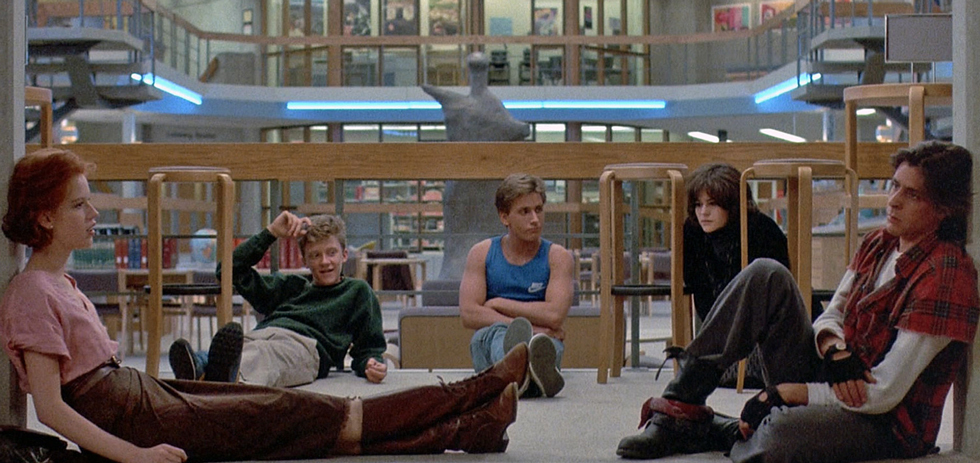
The climactic group-therapy scene, the heart and soul of the film, when these five face each other once and for all, hasn’t ceased astonishing me. Everything about it: the gorgeous establishing shot, the five of them on the floor, the sweeping glass panels, the sculpture, all framed by the neon. The slow pan around the circle during Andrew’s monologue. The raw emotion bursting through the clever layers of dialogue. Claire’s plaintive “What’s wrong with you?” Brian calling out the others for their hypocrisy, breaking down crying. “Would you do that to me?” This is where I’d be crying, too, watching it as a kid. I’m trying to picture another comedy, teen or otherwise, before or since that would have a 20-minute scene of nothing but dialogue between five people seated on a floor, and pull it off.23
So many other things I’d love to get into, that I found myself thinking of for days. The scene between Allison and Andrew: the whispery drama lit by the blue neon, the long silences punctuated by the pulsating synth on the soundtrack. “They… ignore me.” Claire giving Allison a makeover. Quiet, no score, the murmured dialogue, the sound of the brush. The cathartic post-group-therapy dance: the music sucks but I love this scene. So much exuberance – Hughes’ tribute to movie musicals, which would reach its full potential in Ferris Bueller. And the closing, the sun peeking through the grey Illinois gloaming as they head home, the romance so silly but so satisfying.
I’ll stop now, lest this piece get longer and more obsessive than it is. Obviously it’s not easy for me to assess this film critically – it’s too primal. But if one thing occurred to me this time, other than a new appreciation for the artistry of Hughes and his collaborators, it’s that the film still speaks directly to me, barring a couple of tortured lines of dialogue. I don’t think that’s just nostalgia. I may be a bit wiser and more mature now, but the generation gap means nothing to me and I still have many of the same concerns and fears I did back then. In that sense the film’s intergenerational conflict is a surface structure, a set of symbols for the human condition. The real world is a hell of a lot like high school.24 Either way, like American Graffiti or Dazed and Confused, The Breakfast Club is a great teen film that’s also a great film.
I reckon it holds up for today’s kids too. I asked my 18-year-old niece, a high-school senior in Kentucky, what she thinks of it. She told me she’s seen it four or five times. “It’s easily in my top 15 movies.” Does it seem dated to you? “No, absolutely not!! I actually think it’s becoming popular again.” Which character do you relate to the most? “Well, I feel like I can relate to all of them in some way or another; but I can probably relate to Claire the most, because she has an image to uphold and so many people who look to her and expect so much of her.” There you have it folks.
